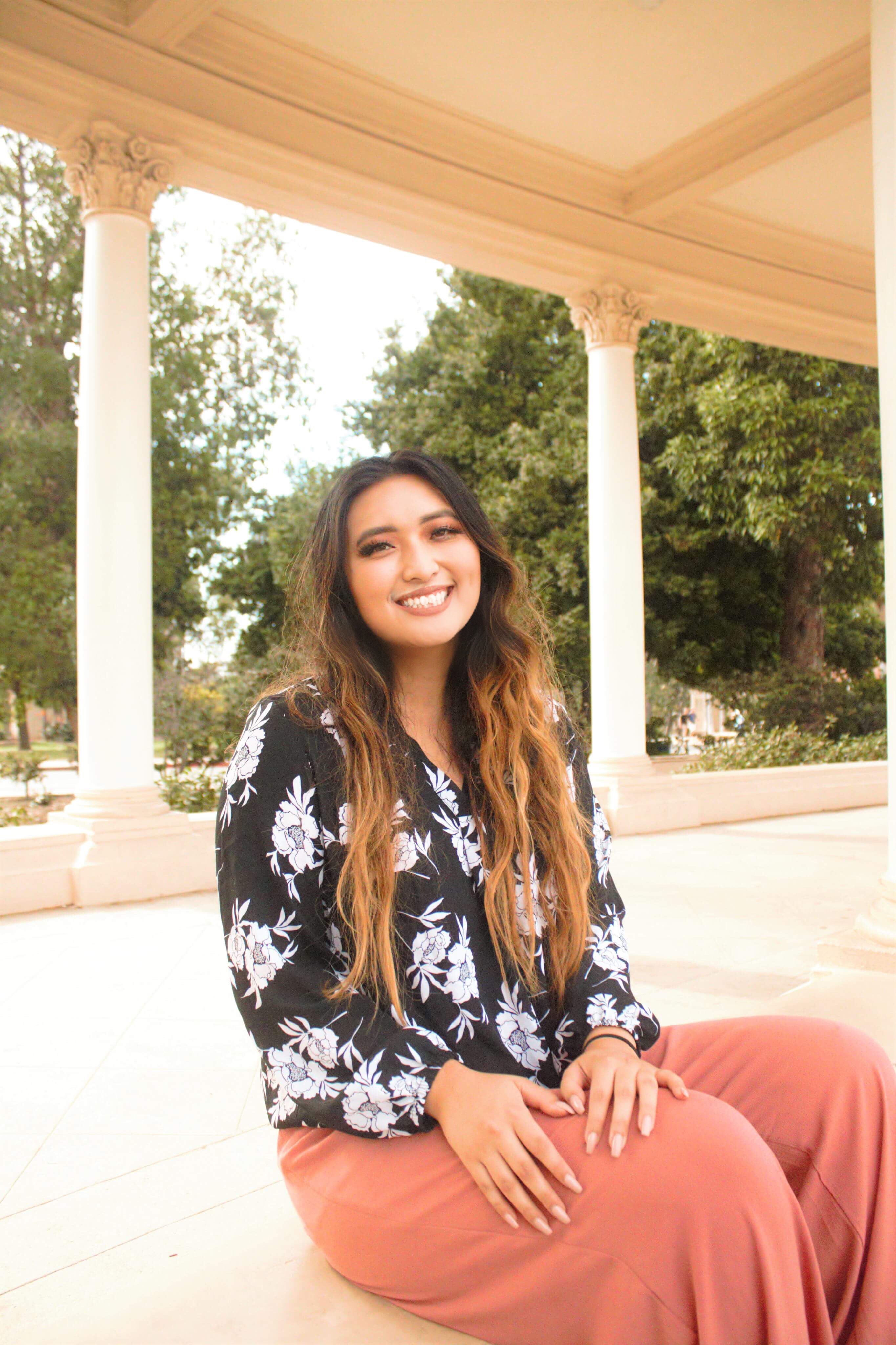Not every second-year doctoral student in the Department of Education can say that their favorite athlete brought them to Gevirtz. But when Caitlin Ng was laid off from her job at a physical therapy clinic weeks into the pandemic, it was a tape of the late Kobe Bryant that made her reconsider her career ambitions. “He was like: ‘If you’re not waking up every day loving what you do, go find something else.’” Caitlin, chronically stressed out by the number of patients she assisted, took his words to heart. Later that year, she applied for a Ph.D. in Education-Policy, Leadership, and Research Methods. In her words: “Best decision ever.”
At Gevirtz, Caitlin loves to research how UC transfers are doing once they’re at four-year universities, with the long-term goal of understanding what supports, like UCSB’s Transfer Student Center (TSC) can do to ensure transfers thrive. Working under the mentorship of Dr. Tarek Azzam, Caitlin focuses on the phenomenon of “transfer shock.” Originally coined in the 1960s to describe the lower GPAs of transfer students compared to first-time freshmen, the term has since broadened to account for both the academic and social wellness of transfers. “It’s so important that we look beyond just grades,” Caitlin shares. “Like: how many students are looking into the job market? How many people are getting the job that they want? How many are staying longer because they feel like they need an internship? How many people have kids or have to take care of their parents or somebody else? How do they feel when entering the university?” In short: what is it in that shock period contributing to the discrepancies?
Caitlin shares that the literature assumes that transfers are thought not to be “academically ready.” However, Caitlin disagrees. “It’s actually academic needs,” she explains. Referencing an article that likens the transition from a 2-year to a 4-year to “culture shock,” she explains that transfers find themselves navigating a whole new “UC culture” during their time as undergraduates. In her research, she argues that amidst the context of this new culture, it is a combination of social, emotional, academic, and basic needs that create a gap in social and academic performance. Reframing this deficit framework, Caitlin’s research will go one step further: in the context of this knowledge, what can be done to better support transfer success?
Caitlin is particularly interested in the role a university transfer center can play. When Caitlin came to UCSB, she quickly became involved with the Transfer Student Center thanks to Malaphone Phomassa (Education, Ph.D., ’16). She has been the graduate student mentor for a little over a year and works with Kari Weber, and other transfer advocates across UCs. “Last year I did the first ever UC-wide transfer panel,” Caitlin says, “It was super cool because I realized we don’t have a way for transfers to streamline from different UCs.” While working with Dr. Phomassa and Dr. Vanessa Woods on 2021’s Transfer Climate Report, Caitlin “got lucky,” realizing that the protocols for her own research were remarkably similar, a fortuity that allowed her to shift the data collection she was working on into her dissertation work.
In her research so far, she’s discovered another framework helpful to thinking through the phenomenon of transfer shock: Arlie Hochschild’s “second shift.” The “second shift” refers to the double burden experienced by working mothers in the late 20th century, who return from their day jobs only to be responsible for the bulk of domestic labor. For transfers, Caitlin posits education as their “second shift,” second to the many other responsibilities transfers are more likely to have relative to their freshmen-starting peers. For example: caring for dependents and working. “My argument,” she shares, “is it’s not about the GPA or performance—it’s not transfer’s performance that’s it—it’s just that they don’t have the same time and flexibility as freshman starting students to actually complete what they need to.”
Caitlin’s research is just a small part of the work she dreams of doing for UC transfers, work that would mean creating climates where transfers can thrive. For her, the future of transfer wellness, in part, will come from UCs “thinking about the transfer networks they have and what existing programs we can start creating.” The Center at UCSB is a great start, but Caitlin wants to foster transfer success throughout the entire UC system. “How do we create better initiatives and better policies to support transfers and actually make sure that they graduate and actually reach the goals that they set for themselves? Or that they can even attend a UC?” she asks.
For Caitlin, “it’s just important if I can just help one person feel a little less intimidated by the system.” But that’s just the start. In the years to come, Caitlin has plans to have a lasting impact on helping UC succeed.
